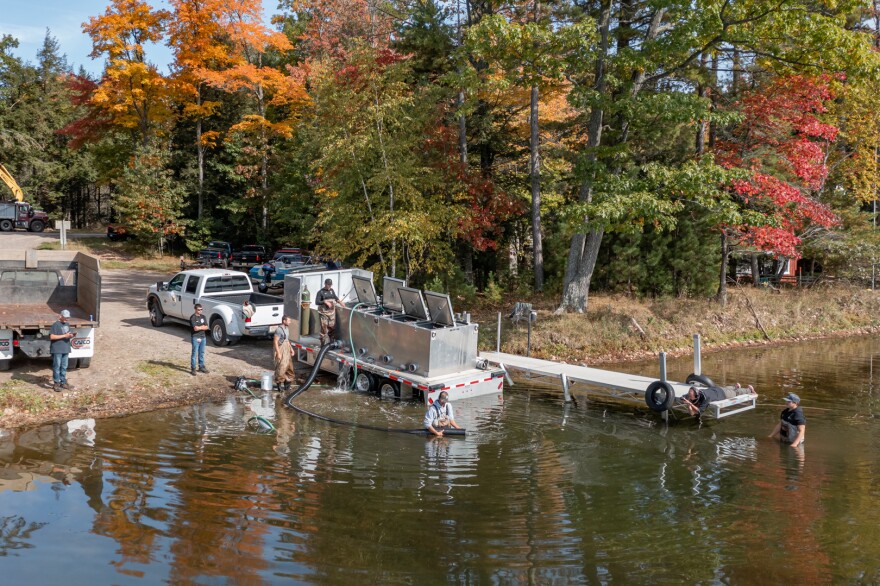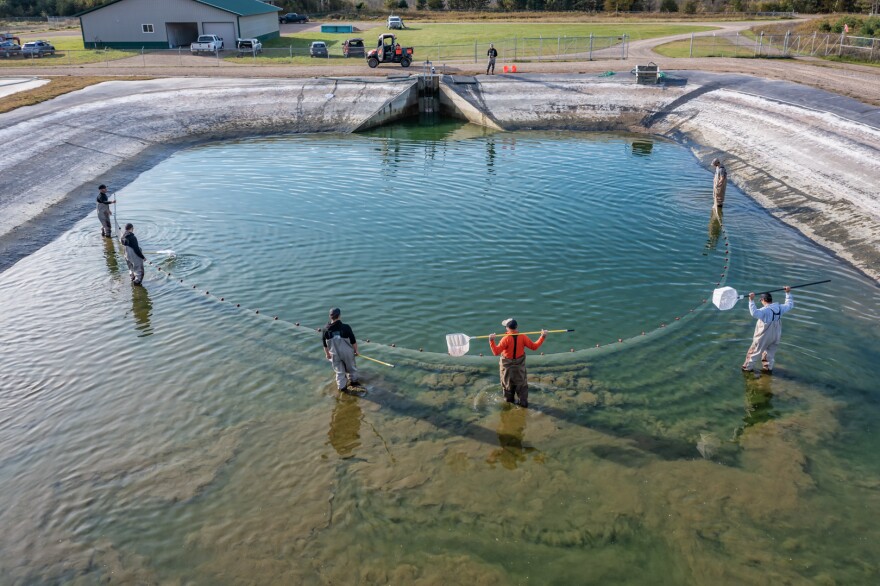As the sun rose, six men in chest waders splashed through a manmade pond the size of a football field, pulling a long seine net through the water.
“We’ll do about four pushes in the pond with the seine,” Clint Soulier explained. “That usually gets 99.9 percent of the fish.”
Soulier is a Mole Lake Fisheries employee, wading with a crew in one of six ponds at the tribal hatchery on the Sokaogon Chippewa reservation.
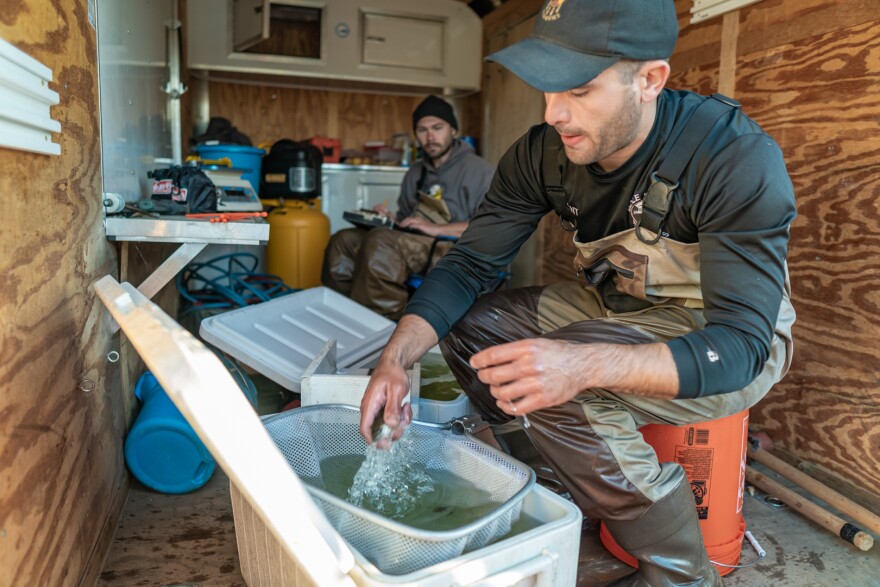
The crew encouraged the 10,000 walleye in the pond to venture through a large pipe, routed to a smaller in-ground holding container.
“The key is to be gentle. [The fish] can get beat up pretty easy. These guys are sliding their feet because you don’t want to step on them,” he said.
After concentrating the fish, Soulier measured a random sample. The fall fingerlings averaged almost eight inches in length. That’s healthy for this time of year.
Next, the thousands of fish flipped and shimmied as they were scooped into five-gallon buckets. Each was meticulously counted as they were loaded into tanks on waiting trucks.
Across the six ponds, the Mole Lake hatchery raised 65,000 walleye fingerlings this year.
They all depart in early fall.
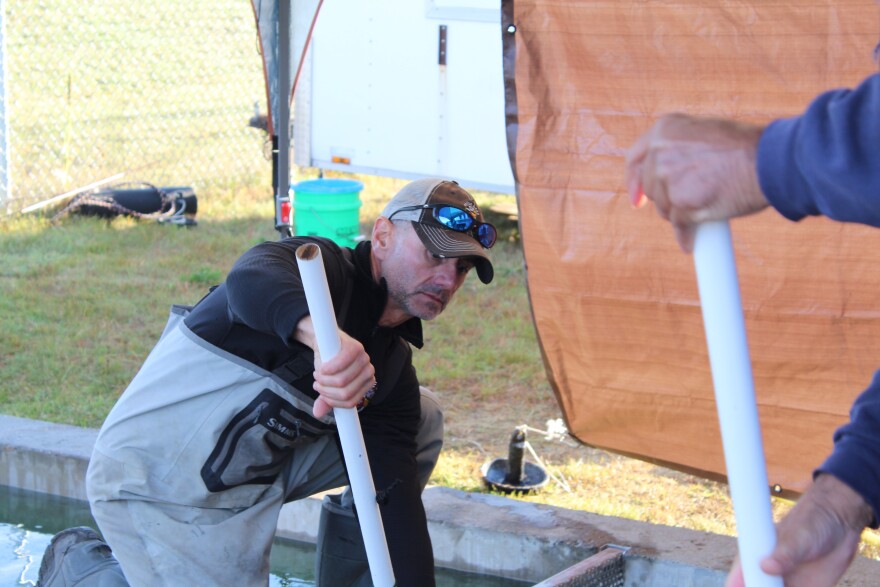
Despite the huge number, tribal fisheries director Mike Preul ensured not a single fish was left behind.
“We have a lot of time and effort into getting them to this point. All the way to the landing, until they go into the lake, we’re going to take special care of them to make sure that we’re not cutting any corners,” Preul said.
Toward the end of the summer, Preul was feeding the walleye 2,500 pounds of minnows every week to help them grow. It was effective: this year’s walleye were the biggest the eight-year-old hatchery has ever produced.
“It is very rewarding to raise these fish all the way to the end, put them in the lake, then ultimately get out and see them show up in the fishery, whether it’s a tribal or nontribal fishery,” Preul said.
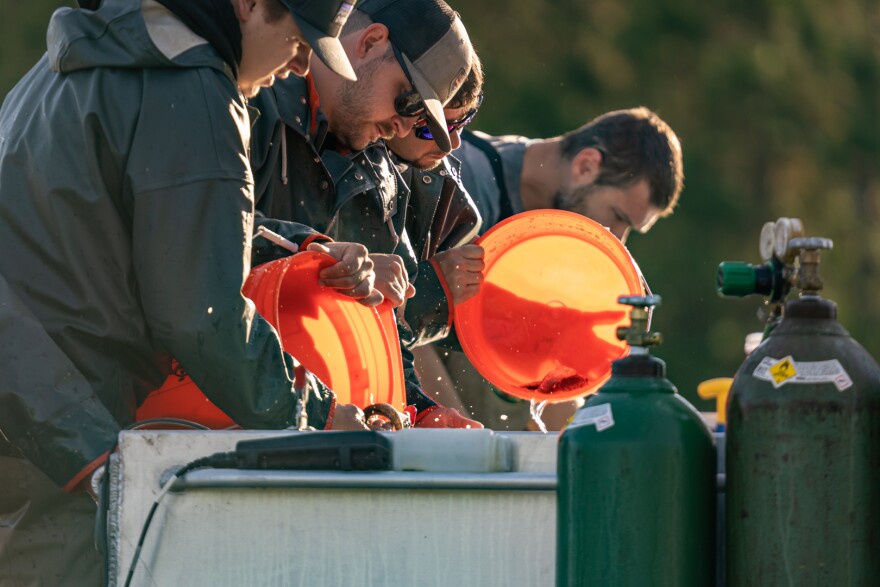
It’s costly and time-intensive to raise walleye all the way into the fall. But fall fingerlings survive much better in the wild than smaller fry or summer fingerlings.
The undertaking is important: fisheries managers are ramping up hatchery capacity as natural walleye populations continue to struggle in parts of the Northwoods.
At Mole Lake, the tribe works with the DNR to select the best lakes for the pond-raised fish. They target lakes that once had healthy walleye populations but have seen reproduction fall off.
“Most of the fish are going into lakes where we think there is a likelihood that natural reproduction will occur,” Preul said. “It had been there historically.”
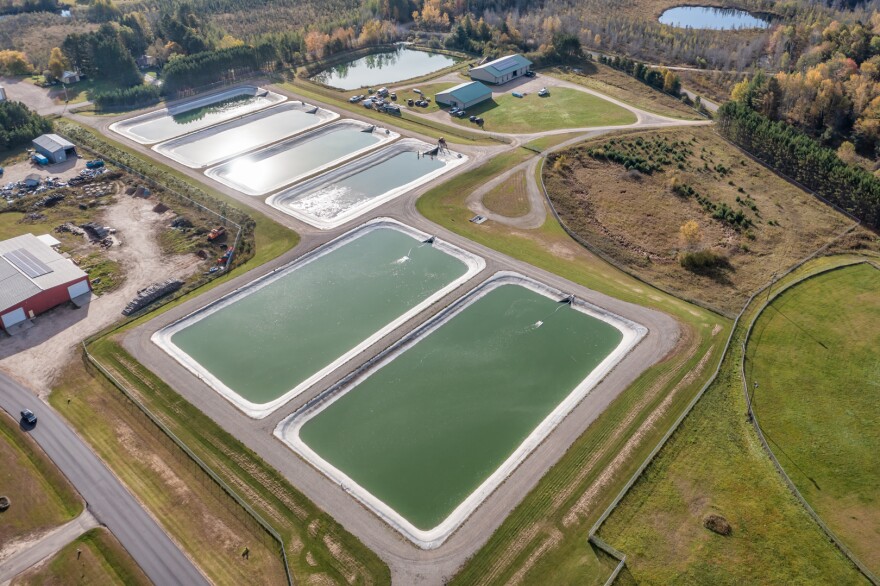
More than 4,000 of the fish were trucked to headed to Pickerel Lake, which straddles the Forest-Langlade county line.
Pickerel Lake is connected to Crane Lake. The system once had a healthy walleye population, but it crashed and had zero natural reproduction for 20 years. Now, the team is trying to restore it.
At Pickerel Lake’s landing, Clint Soulier attached a large-diameter hose to the tanks on the truck, set to shoot the walleye through to the lake.
“It’s going to be a different world for them. They’re used to basically being force-fed minnows. Now they actually have to go and work for them,” he said.
Opening the valve, the fish sped through the wide hose and into the water, disappearing into the shadows.
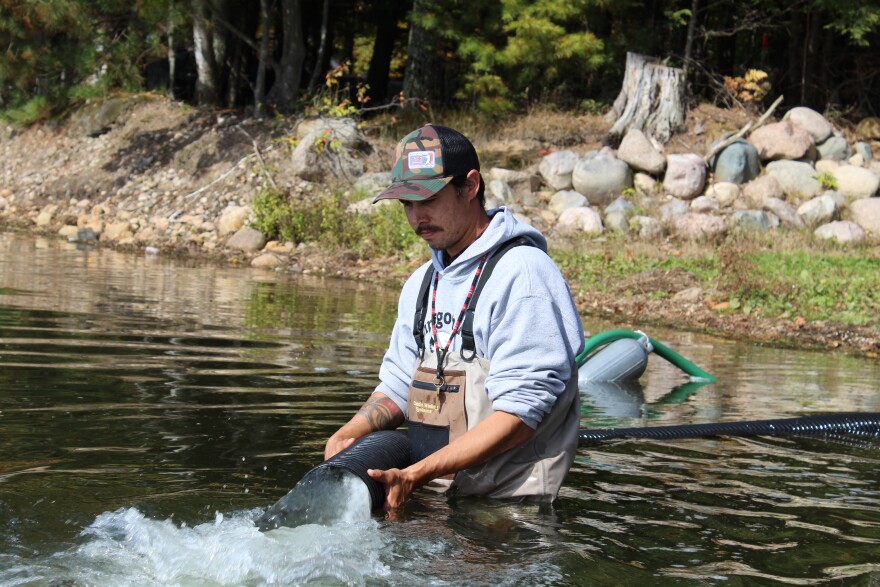
On the other end of the hose, wearing waders and guiding the stream of fish, stood Leelyn Van Zile.
“You just look at them walleyes and it’s like, that’s a beautiful thing,” he said. “I’m going to catch that this next spring. I’m going to catch it next fall, something like that.”
Van Zile is a Sokaogon Chippewa tribal member.
“I do a lot of spearing,” he said. “It’s interesting to see all of these fish going back into the lake to benefit not just us but everybody.”
For Van Zile, walleye are a piece of tribal identity. He shares the fish he spears with the community and tribal elders. He even served walleye he speared at his wedding last year.
Van Zile sees his role, volunteering to raise fish, corralling them in the ponds, then releasing them into lakes, as a step toward preserving tribal fishing rights and a healthy fishery overall.
“I love teaching my kids how, our treaty rights, how they came about. It is important that we do stuff like this. If we don’t, what are we going to have in the future?” he said. “We ain’t going to have much.”
